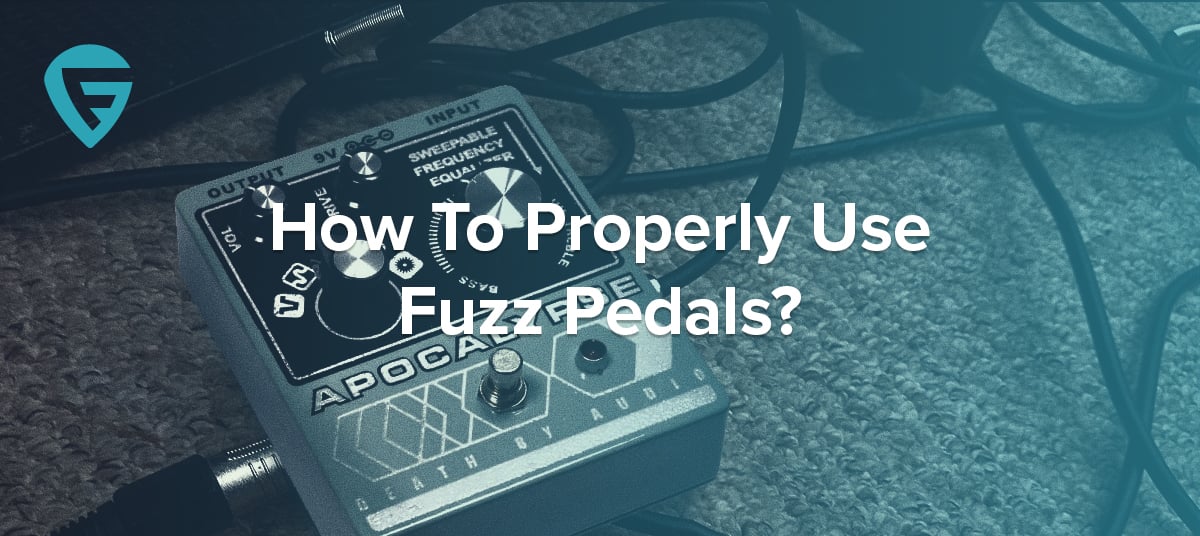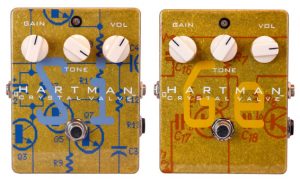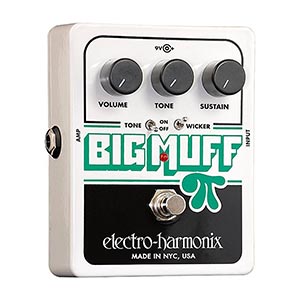- Home
- Instruments
- Gear
- Recording
- Lessons
- Reviews
- Blog

Since fuzz pedals belong to a more vintage type of guitar effects pedals, you can't just plug them in anywhere in your signal chain and use them just like any other pedal. Getting good results from a fuzz pedal takes some effort and understanding of what is going on. What we are going to try to do today is show you how to properly use a fuzz pedal. Unfortunately, we won't go into details since every pedal is different in its own way, but there are some things that can be applied to this entire effects category.
If you just bought your first fuzz pedal, and you are feeling lost, you are in the right place. By the time we are done here, you should be able to dial in a great fuzz tone and enjoy what most guitar players love about this type of effect.
 There are different types of fuzz pedals out there. Some are using germanium transistors, while others are silicone based. Just how important this difference is? We've answered that question in a dedicated article that can be found here “Fuzz Pedals – Germanium VS Silicone”. No matter which type of fuzz pedal you have, one thing will always be the same. Fuzz, as a category of guitar effect, is very sensitive to voltage.
There are different types of fuzz pedals out there. Some are using germanium transistors, while others are silicone based. Just how important this difference is? We've answered that question in a dedicated article that can be found here “Fuzz Pedals – Germanium VS Silicone”. No matter which type of fuzz pedal you have, one thing will always be the same. Fuzz, as a category of guitar effect, is very sensitive to voltage.
Since you regulate the voltage of the entire signal chain by adjusting the volume knob on your guitar, you definitely want to place your fuzz pedal as close to that source as possible. That is why you will generally see fuzz boxes plugged directly into the guitar, or behind a wah pedal if that is something you're using. Putting it further down the chain will give you varying results, which don't necessarily have to be bad, but they are often times unpredictable.
 Like we have just mentioned, the volume knob on your guitar has a pretty big impact on the way fuzz pedals alter the signal. Just by rolling back on the volume knob on your guitar, you can change the tone of the fuzz in some pretty significant ways. Some fuzz pedals can even act as simple boosters or overdrives depending on where your volume knob is at the time. That it something experienced guitar players rely on one when performing with fuzz pedals.
Like we have just mentioned, the volume knob on your guitar has a pretty big impact on the way fuzz pedals alter the signal. Just by rolling back on the volume knob on your guitar, you can change the tone of the fuzz in some pretty significant ways. Some fuzz pedals can even act as simple boosters or overdrives depending on where your volume knob is at the time. That it something experienced guitar players rely on one when performing with fuzz pedals.
 If there's one thing fuzz effect is full of, it is gain. How much gain a fuzz pedal will offer depends on the model and its circuitry. Some are fairly balanced in this regard, while others pack so much gain that it simply too much to handle for some guitar players. That is why you definitely need to pay attention to your gain settings on the pedal. If you're not careful, you can get lost fairly easily.
If there's one thing fuzz effect is full of, it is gain. How much gain a fuzz pedal will offer depends on the model and its circuitry. Some are fairly balanced in this regard, while others pack so much gain that it simply too much to handle for some guitar players. That is why you definitely need to pay attention to your gain settings on the pedal. If you're not careful, you can get lost fairly easily.
Learning the nature of your specific fuzz model, and how each control knob affects the overall sound is key. Not only will you probably find some pretty awesome configurations, but you will also learn the range of your pedal. It might turn out that the pedal you have simply pumps out too much gain for your taste, which is something you can't change.
 If you have a germanium based fuzz pedal, the temperature is something you definitely need to pay attention to. When this type of pedal heats up, the tone starts to change. In most cases, the pedal loses a fair portion of its qualities. Again, this depends on the specific model you have at hand. Silicone based pedals don't suffer from this issue as much.
If you have a germanium based fuzz pedal, the temperature is something you definitely need to pay attention to. When this type of pedal heats up, the tone starts to change. In most cases, the pedal loses a fair portion of its qualities. Again, this depends on the specific model you have at hand. Silicone based pedals don't suffer from this issue as much.
Knowing what is recommended and what is to be avoided in terms of using a fuzz pedal will make your life much easier. We have given you broad tips in this short guide, so if you want to learn some specifics for your specific model, it's best that you check out forums and other online communities for more information. With that said, there's nothing better than being able to dial in a sweet fuzz distortion when you know exactly what your fuzz pedal is capable of. Not only will you start using it for just about any genre of music, but you will also develop a taste for this incredible effect.

Reader Interactions